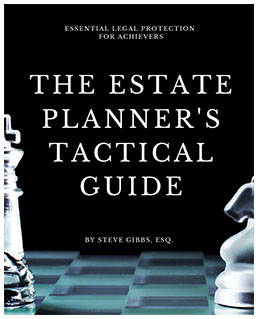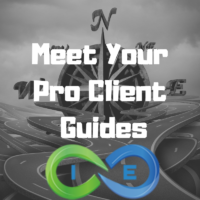In a recent article on inc.com, Richard Branson shares how his philosophy that making employees a top priority can bring benefits to both customers and investors. Simply put, taking care of key employees is taking care of your business.
Key Person Insurance Is Ideally About Protecting Your Business From the Loss of a Key Employee or Business Partner, While Also Providing Value, Security and Incentives for Key Performers.
What is key person insurance?
Key person insurance, also known as, key man insurance (a.k.a. key man policy) is a critically important form of business continuity planning.
Key person insurance does not have a legal definition and does not refer to a type of insurance but rather to the use and application of life insurance or long-term disability insurance, as it applies to the loss of a key business person.
Interestingly, key person insurance also may be the most neglected type of business insurance because it isn’t a required or highly visible type of insurance like liability insurance or property and casualty insurance.
Key person insurance concerns a business need that kind of “lurks in the shadows” and isn’t thought about until a major crisis occurs. By then, it is simply too late.
For this reason, when estate planners and insurance professionals ask you, a business owner, about this kind of insurance, it is for your benefit (and that of your company) and not just a sales pitch.
Key Person Insurance vs Business Succession Planning
Most business have a person or persons who are responsible for the majority of the business revenues. Often a founder or a business partner is easily identified as a key person.
In situations involving multiple business partners, the strategy used is often referred to as business succession planning or family business succession planning, for closely held family businesses, rather then key person insurance.
The distinction is that, for business succession planning, life insurance is purchased to insure surviving business partners against the loss of a business deceased partner.
Business succession planning is therefore a way to provide liquidity so that the surviving partners or the company itself can facilitate a buyout of deceased partner’s interest.
Either the company or a partner (individually) may be the beneficiary of the life insurance policy.
The goal of business succession planning is to lay out the entire transaction in a clear buy-sell agreement, (aka buy-sell insurance), typically in the form of a cross-purchase agreement, so that the partners and the estate of the deceased partner has both the guidance and funds to facilitate the buyout with minimal drama.
How to identify key persons and quantify their value to the business
 Similar to business succession planning, key person insurance seeks to identify persons who have a hard to replace skill set that is valuable to the business. The goal for key person insurance is NOT to facilitate a buyout but rather to compensate the business for the loss of that key person.
Similar to business succession planning, key person insurance seeks to identify persons who have a hard to replace skill set that is valuable to the business. The goal for key person insurance is NOT to facilitate a buyout but rather to compensate the business for the loss of that key person.
It can be challenging to identify key persons and quantify a key person’s value to the business in order to establish the amount of coverage needed to compensate the business for the loss.
An insurance company underwriter typically wants to know:
- your company’s business type (corporation, LLC, partnership)
- key person’s income
- key persons’ role in the business
- key person’s specialized skill
- key person’s experience
To identify a key person, it is important to ask is who is generating substantial profits for the business and how long would these profits continue if that person died? Typically, this can be a key executive or key salesperson or key intellectual property developer, etc.
Formula’s that may be used to establish a key person’s value to the business for purposes of choosing the key man policy death benefit amount include:
- If substantial profits generated by the key person would cease in short order upon that person’s demise and if, for example, the profits represent 10% of the company’s total profits, then 3 to 5 times that 10% figure may be a solid formula to allow the company to replace the key person and the lost profits.
- Another example is hard to replace skills that are vital to the business. Examples of key people with hard to replace skills would be a top sales person, an inventor or engineer.
- Another way that the value of a key person is quantified is to use 3 to 5 times the person’s annual salary. If this person is an owner/partner, they may be working for less than what it would take to replace them, due to their ownership stake in the company.
- Other considerations are the cost of hiring a new person, including travel, training, and lost opportunity cost during the transition.
Does Key Person Insurance Offer Tax Advantages to a Business?
Two questions must be answered to understand whether your key-person insurance will be taxed:
- Are the premiums tax deductible for your business?
- Are proceeds earned from the key person life insurance considered income and the business will be taxed?
The premiums for a key-man insurance policy ARE NOT tax deductible IF the taxpayer is directly or indirectly beneficiary under the policy or contract. So, if your company is the beneficiary, which is kind of the point of key person insurance, then the premiums are not deductible (similar to a personal life insurance contract) because the death benefit is not subject to taxation. This will be discussed a bit more to follow concerning cash value key person insurance benefits.
The proceeds from the key person insurance policy are taxable IF they constitute INCOME to the business unless the Notice and Consent requirements of Section 101(j)(4) of the IRS Code (IRC). IRS Form 8925 must also be included with your company’s annual tax return and requires detailed information about the business.
It is best to seek professional tax advice concerning all the above. However, this issue will be touched on again below because dividends paid by mutual whole life insurance companies are generally not deemed INCOME but rather a return of premiums.
Key Person Life Insurance Options
 What kind of life insurance policy options are available for key person insurance and what are some pros and cons of each?
What kind of life insurance policy options are available for key person insurance and what are some pros and cons of each?
Because key person insurance is simply life insurance that insures the company against the loss of a key business partner or key employee, the decision to purchase key person insurance necessitates some choices about the type of insurance that is most beneficial. Choices for key person insurance could then range from a simple term life policy to an indexed universal life policy (IUL) to a more traditional whole life policy (cash value life insurance).
Term life insurance is the cheapest and simplest option and only provides the business with simple death benefit protection against the loss of a key person. Term life insurance comes in various term lengths and the death benefit can be customized to accommodate the key person’s value to the business.
So, for a start up business seeking SBA financing, this may be the only feasible option. However, even if this is your scenario, a convertible term life insurance policy may be beneficial because it offers the future option to convert the term life policy to a whole life insurance policy and this offers significant advantages to consider as follows.
Advantages of using cash value life insurance for key person insurance
By cash value life insurance, I am referring to whole life insurance from a mutual company that accrues high cash value due to paid up additions and pays dividends.
Permanent life insurance comes in some other variations as well which are universal life and guaranteed universal life insurance. Universal life policies vary and can either be used to secure a permanent death benefit or can be designed to accrue cash value.
Indexed universal life policies (IUL) are tied to a number of financial indexes and may be designed for fast accrual of cash values with greater flexibility than a whole life policy. A IUL policy may therefore be used in a similar fashion to a traditional whole life insurance policy for providing a ready source of available business capital.
However, IULs are market driven and do not offer the same kind of contractual guarantees as a traditional whole life policy. Because IULs are perhaps a less conservative investment, some may believe that they are NOT as ideal for providing all the following benefits listed below.
I will leave that question to your discretion and further review as we discuss some general benefits of using mutual whole life insurance for your key man life insurance policy.
Cash Value Key Man Insurance
Funding a cash value life insurance policy provides business with a efficient, private ready source of business capital if needed.
One of the major challenges of most businesses is maintaining consistent cash flow and having a ready source of financing to bridge the gap if needed.
Traditional bank loans can be difficult to obtain for smaller businesses and also tend to create unnecessary liability for businesses. For example, virtually all business loans put the assets of the company at risk pending repayment of the debt even if they are not directly pledged as security for the loan.
Additionally, if there are partners in the business, all are liable for 100% for any bank loans AND personal guarantees are often required for 1 or more of the partners so that the personal assets of each are also at risk.
…and financing concerns can become critical if a key member of the company experiences an unexpected life event such as disability or death.
It is not usual for a traditional bank to tighten up the purse strings for fear of the exact kinds of business losses that we’ve been discussing. When this happens, if a cash value life insurance policy was used to fund a key person policy, the amount of the cash value can be taken out in the form of an easily accessible life insurance policy loan, with no origination costs, tax free.
Unlike bank financing, as we’ve discussed concerning the infinite banking concept, the loan terms for cash value life insurance policies are highly flexible.
…and policy performance continues as well as payment of dividends if the policy is structured correctly and with the right mutual insurance company.
Also, this strategy is favorable to a traditional bank loan, both on your business balance sheet, because it is backed by an asset (your insurance policy), and because your interest rates are likely more favorable. Assuming the loan is used for a business purpose, it is also tax deductible under current IRS rules.
Finally, it is is often wise to purchase life insurance ANYWAY on those who are responsible for repaying the loan AND a traditional bank may even require this in order to protect themselves. If it isn’t required, an estate could be thrown into turmoil (following the untimely death of a business owner) and, in a worse case scenario, the entire business could be forced to liquidate to satisfy the unpaid business loan.
Funding your key person insurance with cash value life insurance simply and easily can resolve ALL of the above concerns.
Funding a cash value life insurance policy adds assets to the balance sheet of your company whereas term life insurance does not.
Simply put, term life insurance is not an asset and functions like “renting a death benefit”, in much the same comparison to renting a home.
On the other hand, to find out that cash value life insurance is an asset, one only needs to refer to the balance sheets of major banks and corporations and scroll down to the column labelled “life insurance assets” to discover that this cash value life insurance is a major part of the value on the balance sheet of the company.
There are even names for this asset such as Bank Owned Life Insurance (BOLI) and Corporation Owned Life Insurance (COLI). In truth, the cash value life insurance holdings by financial powerhouses such as Bank of America generally outpace real estate and range in the tens of billions of dollars.
For your company this means…
… when your company provides a key person with cash value life insurance, in addition to the benefits discussed above, you will simultaneously be acquiring assets on your balance sheet in the same way that you’d acquire business equipment or real estate. Fueled by the growth of a guaranteed rate of interest AND tax free dividends, this asset will grow independently when fully funded and will add to the asset value of your company.
Better yet, this will be a stabilizing force to protect against downturns in your business or the economy as history demonstrates.
Mutual insurance companies are highly rated for sound financial reasons. Namely, future performance is backed by 200 years of solid steady, recession proof, financial performance, and this includes the steady payment of dividends.
Arguably, this will be the safest asset on your company’s balance sheet…even superior to real estate due to the inherent risks of the real estate markets. Perhaps this is why the financial powerhouse companies own more cash value life insurance then real estate…something to consider.
Funding a cash value life insurance policy can be an incentive to build loyalty and reward key people.
As discussed above, key person insurance insures the company against the loss of key people. Under this scenario, the company owns the policy and is also the beneficiary who receives a death benefit if the key person dies. Using cash value life insurance for this purpose, then offers a secure source of tax advantaged financing as also discussed.
…now what if…
Designing Key Man Insurance as a form of Golden Handcuffs
…you provide your key person with golden handcuffs by offering them ownership of the policy and the accrued cash value, say for example…after staying with the company for ten years? This can be done through a restricted endorsement and the transfer of policy ownership to your key person is currently exempt from taxation under the IRS transfer rules. This is a flexible option, so rather than having the key person’s ownership “vest” after 10 years, you should have it vest in one year increments on an annual basis to keep the incentive building.
It gets better though…
…because as the policy vests to your key employee, the premiums can become tax deductible for your business AND prior to vesting, while your business owns the policy, you can access the cash value for your business operations for all of the other reasons discussed above.
Which is why it would be possible to have several cash value life insurance policies building concurrently, providing your business with death benefit protection against the loss of key employees, all while building a private financing source with tax advantageous growth. Sound intriguing? It is…
All of the above can be customized for your specific business needs and objectives AND we offer a free business evaluation to get you started. Call or e-mail for your complimentary strategy session today.







